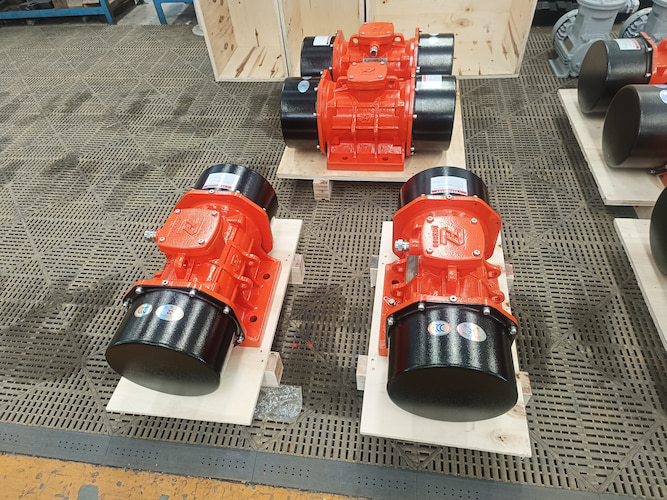What is the power equipment of a drilling rig?
Oct 17, 2025
The power equipment of a drilling rig is the core device that supplies energy to the entire drilling system. Currently, the mainstream power types are divided into two major categories: diesel engine power and electric power, while hybrid power mode is adopted in some complex scenarios.
Ⅰ. Diesel Engine Power
Diesel engines are the traditional mainstream power source for onshore drilling rigs. They output mechanical energy through diesel combustion, which is then distributed to various working units via the transmission system.
Core Advantages
Strong independence: It does not rely on an external power grid and can operate independently in off-grid scenarios such as wilderness and deserts, with wide adaptability.
High power density: The single-unit power can reach 1000-3000 kW, which can meet the high-load requirements of deep wells and ultra-deep wells.
Fast start-up speed: It can start and stop quickly under emergency conditions (such as well kick and pipe sticking), with a response time of less than 30 seconds, ensuring operation safety.
Key Equipment
Main diesel engine: Mostly V-type 12-cylinder / 16-cylinder four-stroke diesel engines, equipped with a turbocharging system to adapt to harsh environments such as high altitude and high temperature.
Diesel generator set: Provides low-voltage power (e.g., for control systems, lighting, and mud treatment equipment) to the auxiliary systems of the drilling rig, and usually operates in linkage with the main diesel engine.
Applicable Scenarios
Onshore remote oilfields, desert / plateau drilling, workover operations, and other scenarios without stable power grid coverage.
Ⅱ. Electric Power
Electric power is the mainstream development direction of modern drilling rigs, replacing traditional diesel engines through the "power grid supply + motor drive" mode.
Core Advantages
Low energy consumption and low pollution: Compared with diesel engines, energy consumption is reduced by 15%-25%, and there is no exhaust emission, which complies with environmental regulations. It is suitable for environmentally sensitive areas such as offshore and urban suburbs.
High control precision: Variable-frequency speed-regulating motors (e.g., permanent magnet synchronous motors, asynchronous motors) are adopted, which can realize precise adjustment of drilling parameters (such as weight on bit and rotational speed), improving wellbore quality.
Low maintenance cost: The motor has a simple structure, without vulnerable parts such as pistons and valves of diesel engines. The annual maintenance cost is reduced by 30%-40%, and the service life is extended to 15-20 years.
Key Equipment
High-voltage frequency converter: Converts high-voltage electricity from the power grid into variable-frequency power supply to control motor speed, serving as the "control core" of the electric power system.
Drive motor: Divided into rotary table motors (driving drill string rotation), mud pump motors (driving mud circulation), and hoisting motors (driving traveling block for tripping operations). The single-unit power ranges from 500-2000 kW, configured according to load requirements.
Emergency generator set: A backup power source when the grid power is interrupted, mostly a combination of a small diesel engine and a generator, ensuring uninterrupted operation of key equipment such as blowout preventers and mud pumps.
Applicable Scenarios
Offshore drilling platforms, large drilling rigs in onshore areas covered by power grids, and drilling in environmentally sensitive areas (e.g., coastal areas, suburban areas).
Ⅲ. Hybrid Power
Hybrid power combines the advantages of diesel engine power and electric power. The common mode is "diesel engine + battery energy storage system", which is mainly used in scenarios with large load fluctuations (e.g., alternating operations of tripping and drilling).
Working Principle
During low-load drilling operations (e.g., tripping), the diesel engine drives the generator to charge the battery; during high-load operations (e.g., high-pressure circulation of mud pumps), the battery and diesel engine supply power together, reducing the load fluctuation of the diesel engine and lowering fuel consumption.
Core Advantage
Fuel consumption is reduced by 20%-30% compared with pure diesel engines, and wear caused by frequent start-stop of the diesel engine is reduced, extending the equipment service life.
Applicable Scenarios
Onshore deep well drilling, workover operations, and other scenarios with frequent load fluctuations.
Ⅳ. Maintenance Points
For Diesel Engine Power
1.Regularly check the engine oil level and diesel filter element to prevent nozzle wear caused by impurities.
2.Replace the engine oil and air filter element every 200 hours to prevent high-temperature carbon deposition from affecting power output.
3.In cold environments, use anti-freezing diesel and add antifreeze to the water tank.
For Electric Power
1.Regularly clean the cooling fan of the frequency converter and motor windings to prevent overheating caused by dust.
2.Test the motor insulation resistance monthly to avoid short circuits due to moisture.
3.After grid power interruption, check the battery capacity of the emergency generator to ensure normal emergency response.
Read More





 Language :
Language : English
English Русский
Русский عربي
عربي
 GET A QUOTE
GET A QUOTE



 IPv6 network supported
IPv6 network supported